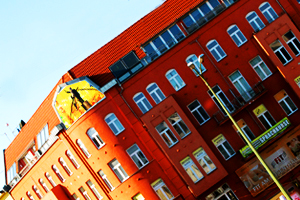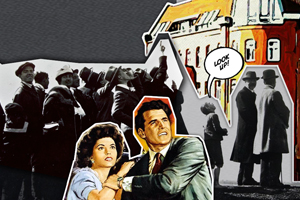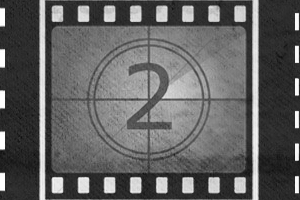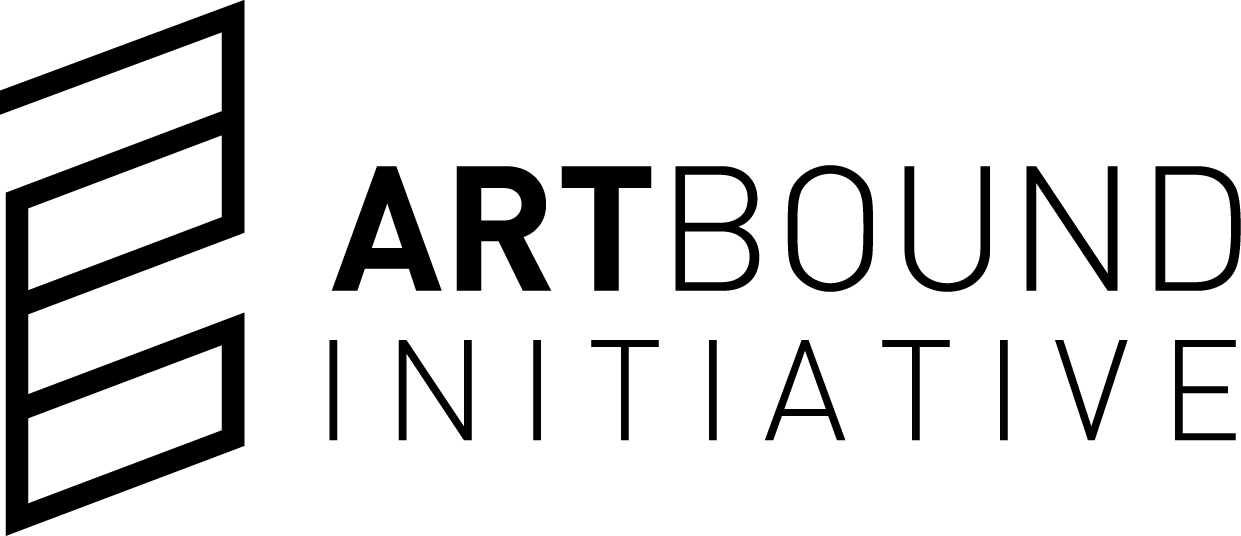MOMENTUM InsideOut @ CHB Fassadenkino
Presents
Lockdown Schmockdown
16 April – 30 May 2021
Please note that
THE SCREENINGS ON 7 – 30 MAY ARE CANCELLED
due to Lockdown regulations. We hope to resume the program after the end of the Lockdown.
But you can still watch the Lockdown Schmockdown program
as Season 4 of COVIDecameron on the MOMENTUM Channel on IkonoTV!
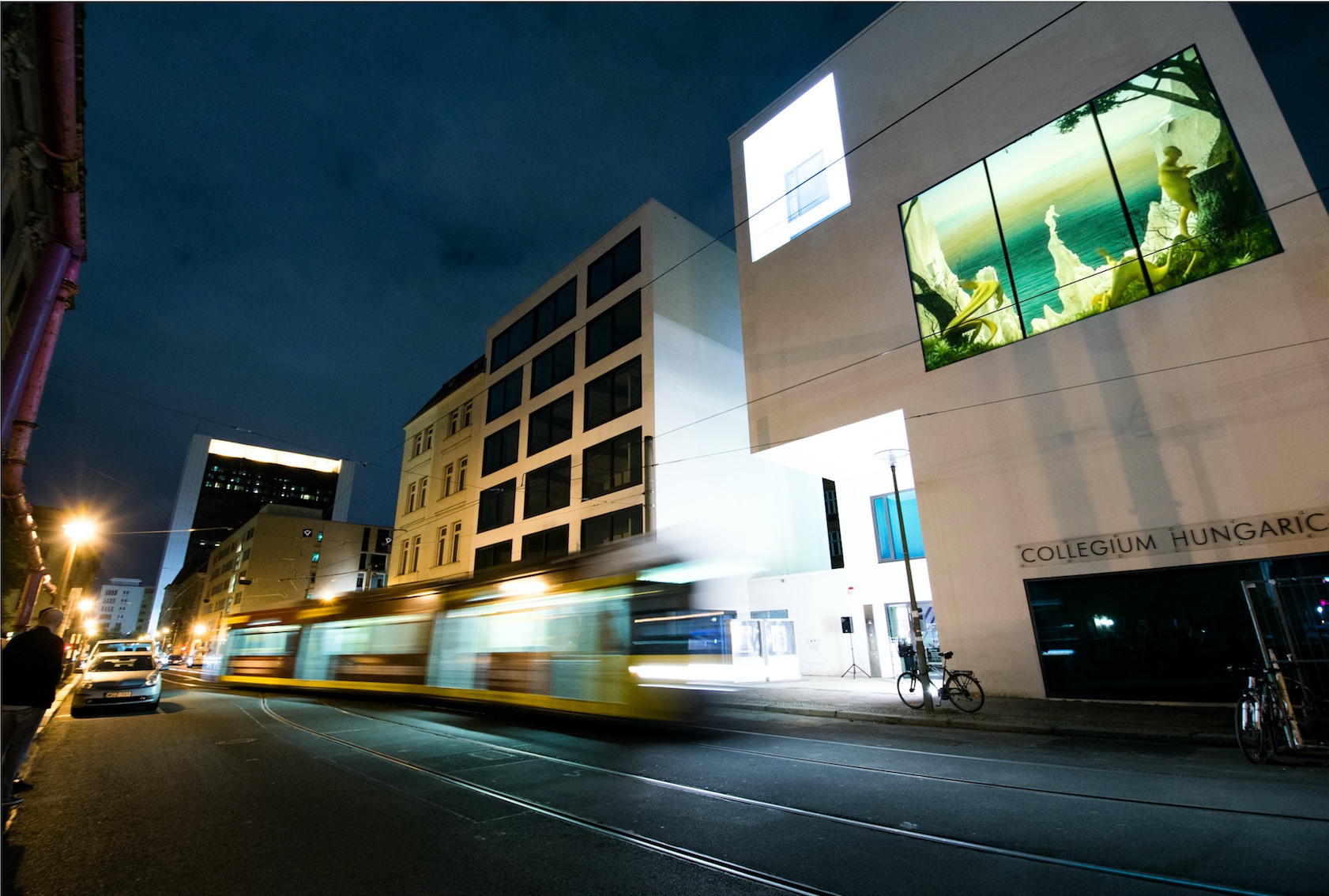
Open-Air Video Program on the Media Façade of
CHB – Collegium Hungaricum Berlin
& on the MOMENTUM Channel on IkonoTV
Gáspár Battha, Marina Belikova, Theo Eshetu, Gülsün Karamustafa, Tamás Komoróczky, David Krippendorff, Júlia Lantos, Éva Magyarósi, Bori Mákó, Map Office, Kate McMillan, András Nagy, Bea Pántya, Qiu Anxiong, Eszter Szabó, Kristóf Szabó, David Szauder, Viktória Traub
Zsuzska Petró, David Szauder, Rachel Rits-Volloch
In Partnership With
 |
 |
@ Collegium Hungaricum
Dorotheenstraße 12, 10117 Berlin
Corona-Compatible Outdoors with FFP2 Masks and Social Distancing Required
Watch the videos on the outdoor screen. And listen to the sound in real-time on your phone!
Click Here to Listen during the screening times > >
https://stream.radio.co/sb3ec6b52c/listen > >
Every Friday – Sunday @ 8:30 – 10:00pm
PROGRAM CHANGING WEEKLY
Due to the 10pm curfew in Berlin, we are happy that you can also watch the Lockdown Schmockdown video art program as Season 4 of COVIDecameron on the MOMENTUM Channel on IkonoTV any time of the day!
With the eyes and hearts of the world still locked onto the terrible aftermath of COVID-19, and with Berlin still in lockdown over a year after the pandemic began, MOMENTUM together with the Collegium Hungaricum Berlin gathers a selection of exceptional artists from the MOMENTUM Collection COVIDecameron exhibition in dialogue with artists from Hungary. Showing video artworks re-contextualized through the prism of life at the time of Corona, this exhibition series of video art in public space is a contemplation through art from elsewhere upon the poetry of the day-to-day as it relates to the changing world we inhabit. Created during the pandemic lockdown in Berlin, this open-air program of video art is our response to the long months of gallery and museum closures, and our gift to a public craving for culture in real-space and real-time. MOMENTUM Inside out and .CHB Façade Kino bring video art out of the gallery and onto the streets for all to see on Berlin’s Museum Island!
– Rachel Rits-Volloch
While Berlin is cautiously looking forward to spring and freedom in these uncertain times, Collegium Hungaricum Berlin has teamed up with MOMENTUM to offer a unique COVID-compatible art experience adjacent to Berlin’s Museum Island. We have gathered a selection of cutting-edge media and video art from Hungary to be shown in dialogue with works from the MOMENTUM Collection, reflecting on our shared experience of a world affected by a global pandemic. Starting on April 16th, the open-air screening program Lockdown Schmockdown, initiated by MOMENTUM IsideOut together with CHB Fassadenkino, will be running every Friday to Sunday from sundown until 11pm, until the end of May.
– Zsuzska Petró
WEEK 1 / 4 / 7
16 – 18 April, 7 – 9 + 28 – 30 May
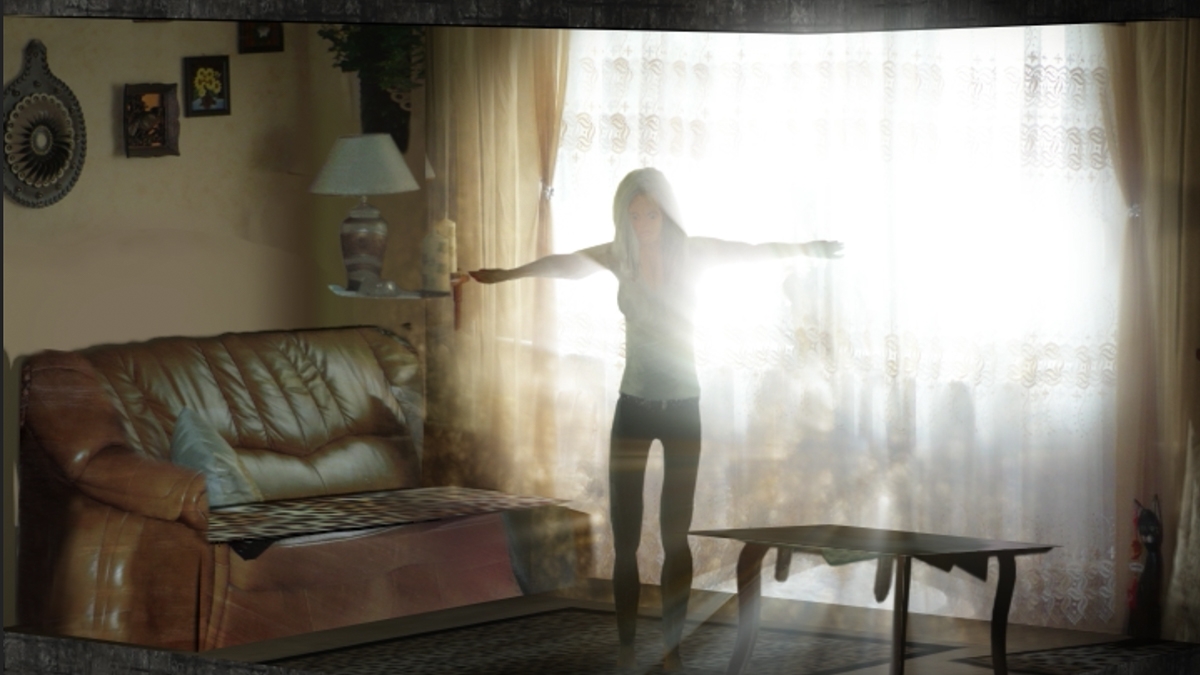
Eszter Szabó, Dispenser of Delights (2013-2015)
Eszter Szabó’s video is dealing with the notion of waiting for miracles to happen. The weary protagonists exercise self healing rituals, and appear in front of a 3D background with textures of photos from existing real estate advertisements that were downloaded from the internet. The original photos give a very sincere insight into a typical home in today’s Hungary. The movements of the lonely figures were inspired by traces of “sublime beauty” that can be detected in these very familiar spaces.
BIO
Eszter Szabó lives and works in Budapest. She has a master’s degree from the Hungarian University of Fine Arts, and a postgraduate degree from Le Fresnoy Studio, France. Eszter has also participated in several workshops and study visits, among others at the Salzburg Summer Academy with Shirin Neshat, in Bielefeld with Artist Unlimited, as well as in Brooklyn, New York with Triangle Arts. Her works have been presented at various solo and group shows around the world, eg. Paris, Bruxelles, New York, Barcelona, Berlin, London, Rome, Salzburg.
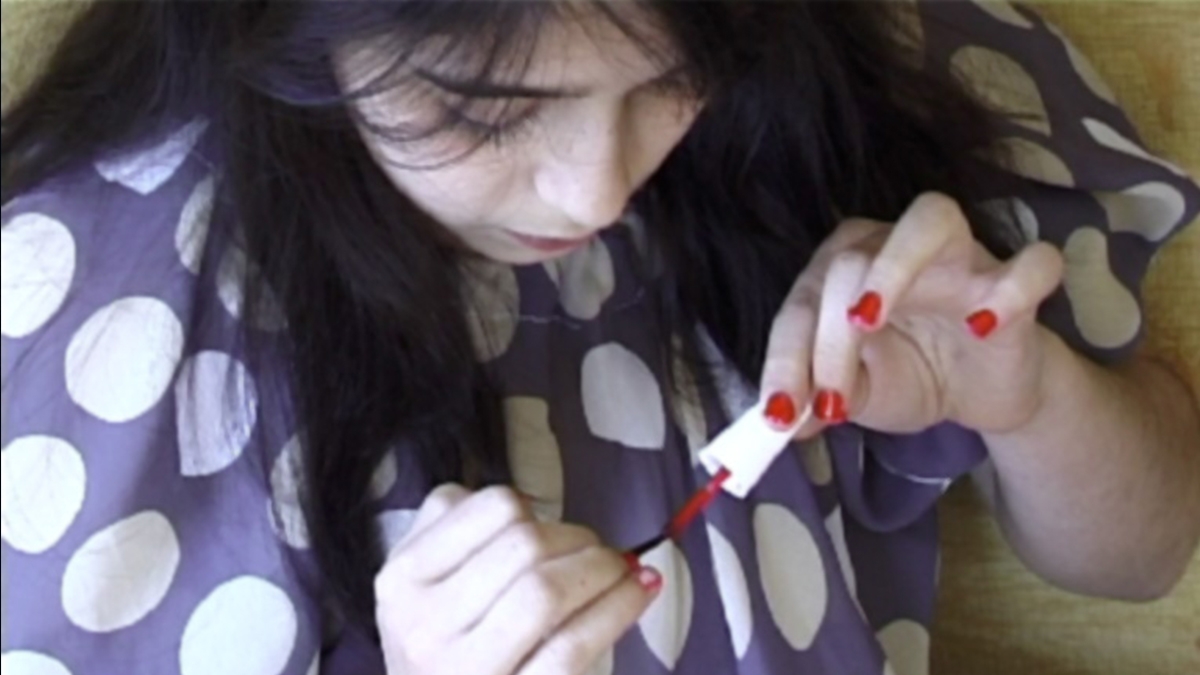
Gülsün Karamustafa, Personal Time Quartet (2000)
Gulsun Karamustafa’s 4-channel video installation and soundscape, Personal Time Quartet, was intended as a portrait of the artist’s childhood. Yet now, seen through the prism of Corona-times, this portrait of innocent domesticity instead paints a picture of how many of us have felt during the various pandemic lockdowns, stuck indoors and perpetually repeating the same domestic tasks.
BIO
Gülsün Karamustafa was born in 1946 in Ankara, Turkey. She lives and works in Istanbul and Berlin, where she is recognized as one of the most important and pioneering Turkish contemporary artists. She received her MFA from the Istanbul Academy of Fine Art in 1969. Using personal and historical narratives, Karamustafa explores socio-political issues in modern Turkey, addressing themes including sexuality-gender, exile-ethnicity, and displacement-migration. Her work reflects on the traumatic effects of nation building, as it responds to the processes of modernization, political turbulence, and civil rights in a period that includes the military coups of 1960, 1971, and 1980.
Karamustafa is one of the laureates of the 2014 Prince Claus Award, and her recent solo exhibitions include: “Chronographia” at Hamburger Bahnhof – Museum for Contemporary Art, Berlin (2016-2017); “Swaddling the Baby”, Galerie Krinzinger, Vienna (2016) / Villa Romana, Florence (2015); “Mystic Transport” (a duo exhibition with Koen Thys), Centrale for Contemporary Art, and Argos Centre for Art and Media, Brussels (2015-2016); “An Ordinary Love”, Rampa, Istanbul (2014); “A Promised Exhibition”, SALT Ulus, Ankara (2014), SALT Beyoglu, SALT Galata, Istanbul (2013); amongst many others. Karamustafa took part in numerous international biennales, including: 31st Sao Paulo Biennial (2014); 3rd & 10th Gwangju Biennials (2000, 2014); 4th Thessaloniki Biennale (2013); 1st Kiev Biennale (2012); Singapore Biennial (2011), 3rd Guangzou Triennial (2008); 11th Cairo Biennial (2008); 2nd Contour Video Art Biennale, Mechelen (2005); 1st Seville Biennial (2004); 8th Havana Biennial (2003); 3rd Cetinje Biennial (2003); 2nd, 3rd & 4th Istanbul Biennials (1987, 1992, 1995).
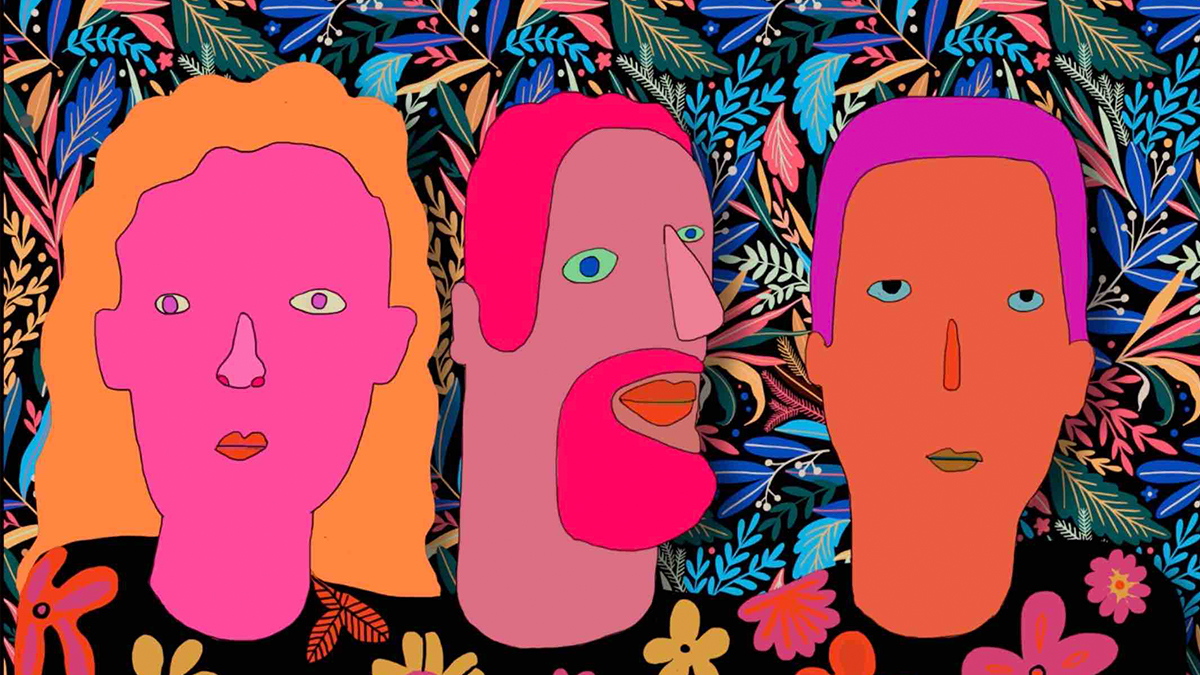
Viktória Traub, Loops (2020/2021)
Viktória Traub’s figures repeat the same ritualistic movements over and over again. These movements are rituals of love, connection and care, which may give joy, or cause pain at the same time. During the past year, some of us experienced isolation, or loneliness, others found the constant companionship of their loved ones rather challenging. Either way, our life in lockdown has once again proven the importance of meaningful personal connections.
BIO
Viktória Traub graduated at the Moholy-Nagy University of Art and Design as an animation artist in 2008. In 2006, she spent a semester at the animation department of ESAD (Escola Superior de Artes e Design) in Portugal. Since her graduation, she has been working as animation director for various production companies. Her short films The Iron Egg and Mermaids and Rhinos have been presented at a series of film festivals around the world. In 2018, the Mermaids and Rhinos was selected by the Association of Hungarian Film Critics as the Animation of the Year. At the moment, she is working on the preproduction of the short animation Shoes and Hooves, as well as GIF-animations and graphic designs.
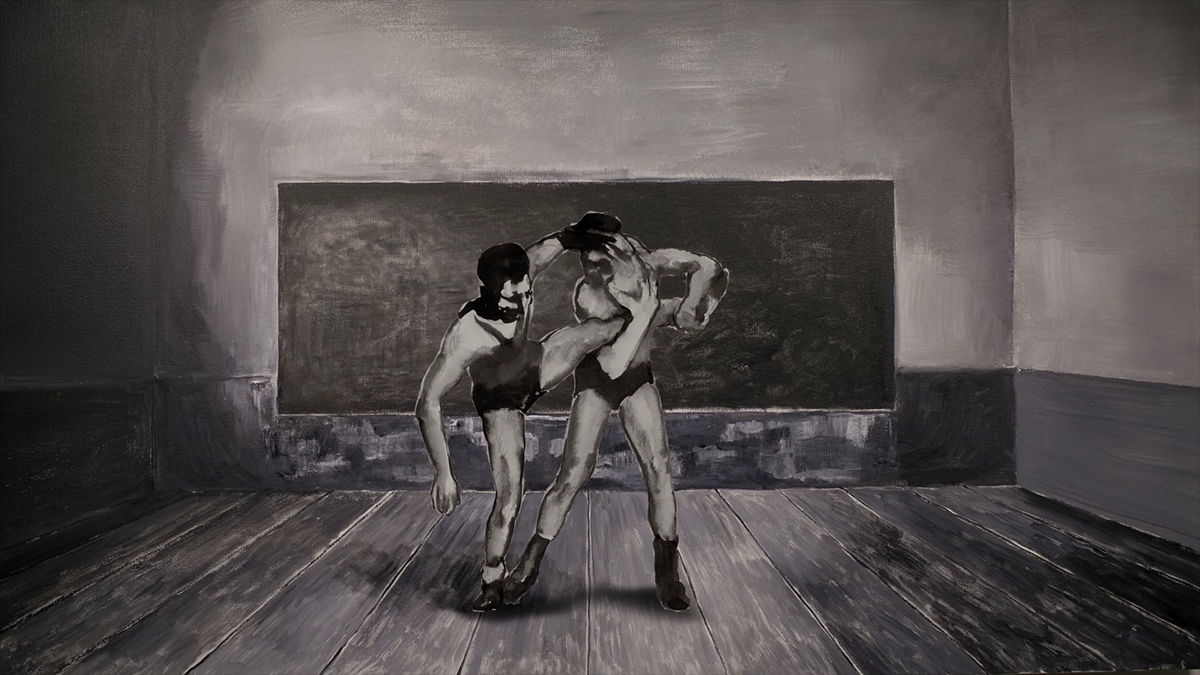
Qiu Anxiong, Cake (2014)
In a timeless and exquisitely crafted contemplation on the past, the present, and the relationship between the two, Qiu Anxiong’s Cake combines painting, drawing and clay with a discordant soundtrack of mechanical noises. With heart-rate monitors, sirens, and police radio scanners running throughout the soundtrack, and images of wrestlers rendered in a variety of media, this work can be read as particularly emblematic of the struggles of our viral times.
BIO
Qiu Anxiong (b. 1972, Chengdu) is one of China’s most prominent contemporary artists. He studied at the Sichuan Fine Arts Institute, and in 2003 he graduated from the University of Kassel College of Art in Germany after six years of studying both contemporary international art and traditional Chinese culture. After having worked predominantly in oil painting during his studies in Kassel and having later turned to landscape painting in the tradition of the old Chinese masters, Qiu’s return to Shanghai in 2004 marked a shift in interest towards animations and video art. In his animated films, Qiu co-mingles the classical and the contemporary, using the traditional Chinese ink-and-wash style to transpose contemporary social and environmental issues onto traditional Chinese landscapes, taking the undifferentiated mass of history as his raw material. Qiu’s works are known for their profound and bleak contemplation on the relationship between man and nature, and criticism of mass urbanization and environmental degradation.
Qiu Anxiong’s work is held in numerous museum collections, including: Museum of Modern Art, NY, USA; Metropolitan Museum of Art, NY, USA; Spencer Museum of Art, Kansas, USA; Ashmolean Museum, Oxford University, UK; Kunst Haus Zurich, Switzerland; Museum of Contemporary Art Tokyo, Japan; Art Museum of Hong Kong, Hong Kong; Astrup Fearnley Museum of Modern Art, Oslo, Norway. Qiu Anxiong rose to international prominence in the 2006 Shanghai Biennial, and, the same year, received the CCAA Contemporary Art Award from the Shanghai Zhengdai Museum of Modern Art (2006). Subsequently, he participated in numerous international biennales and festivals, including: 3rd Nanjing International Art Festival, China (2016); 1st Animation Film Festival Xi An, China (2012); 4th Ink Painting Art Biennale Tai Pei, Taiwan (2012); 1st Animation Biennale, OCAT Art Center, Shen Zhen, China (2012); Chengdu Biennale, China (2011/2001); 54th Venice Biennale, Italy, Collateral Program (2011); 29th Sao Paulo Biennale, Brazil (2010); Busan Biennale, Korea (2010); Nanjing Bienale, China (2010); Animamix Biennial, Today Art Museum, Beijing, China (2009); 6th Asia Pacific Triennial of Contemporary Art (APT6), Queensland Art Gallery, Brisbane, Australia (2009-2010); 11th Cairo Biennale, Egypt (2008); 2nd Athens Biennial, Greece (2009); 5th Media Biennale, Seoul, Korea (2008); Mediations Biennale, Poznań, Poland (2008); 3rd Guangzhou Triennial, China (2008); 16th Biennale of Sydney, Australia (2008); 3rd Lianzhou International Photo Festival, China (2007);
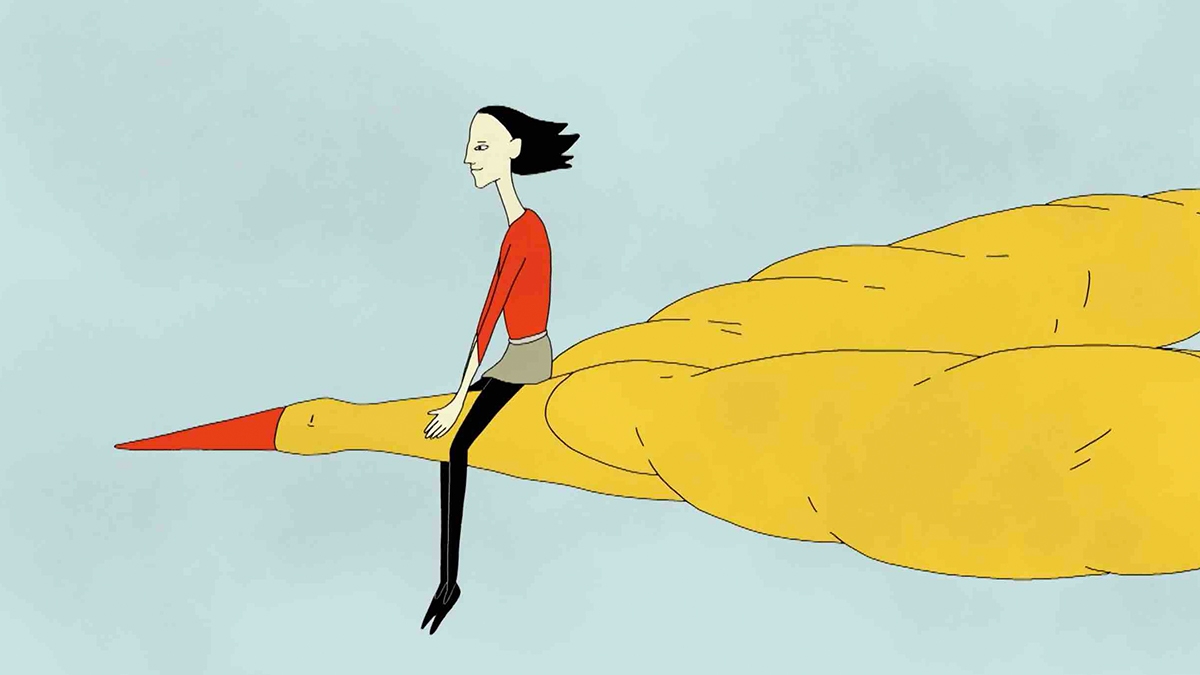
Júlia Lantos, Incognito (2020/2021)
Incognito’s main character struggles with the challenges of everyday life. She sees her job as a prison, and the world as a war that is fought with alienation, aimlessness and selfishness instead of weapons. Her only refuge from the cruelty of the outside world is her apartment, while her only companion is a yellow bird, symbolising her desire for freedom. One day, a peculiar cloud appears above her apartment, which triggers an almost supernatural process in her life: she gradually withdraws from society, stops going to work and ignores the world beyond the four walls of her home. However, the outside world cannot be ignored forever, eventually it breaks down the protective walls around her.
BIO
After finishing high-school, Júlia spent a year in Berlin in order to further her professional and personal development. She earnt her bachelor’s degree from the Budapest Metropolitan University in 2018 with her short film Incognito. Since 2018, she has been undertaking illustration and animation projects. Currently, she is finishing her master’s degree. Incognito has been screened at several international film festivals, and won an award at the Alternative Film Festival in Toronto for Best Animated Short Film.
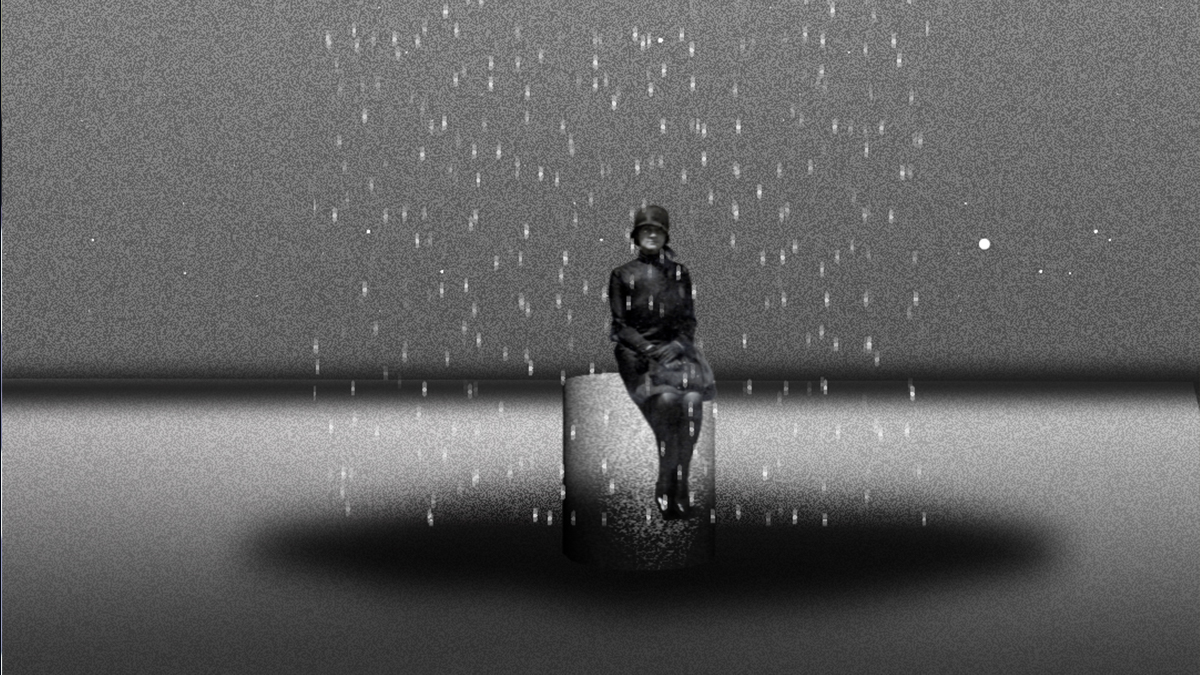
David Szauder, Six Easy Pieces About Nothing (2020-2021)
1 – Personal Rain Snow (2021). 2 – Galactic Drama (2020). 3 – The Philosopher Garden (2020). 4 – Kinetic Amusement (2020). 5 – Joyride /em>(2021). 6 – Cosmic Accident (2020)
“Last June, after almost four months of lockdown, I began to work with animated compositions that depicted imaginary figures in a timeless space, with no other human being in sight. The figures themselves are motionless, while the space they peacefully inhabit shows some kind of cosmic motion. The objects of this environment, as well as the space itself are animated by a mysterious force. The ensuing rhythmic movement renders their experience eternal. The figures are peaceful, pensive, and subdued, yet isolated and perhaps even lonely. They appear as though they were all ‘sitting on the edge of the void…’ – But perhaps, it’s not about the void, and one day, they might swing into action. We’ll see. Will we?” (Dávid Szauder)
BIO
Media artist David Szauder (b. 1976 in Hungary) studied Art History at the Eötvös Loránd University and Intermedia at the Hungarian University of Fine Arts in Budapest, and completed a Masters Fellowship at the School of Arts, Design and Architecture at the Aalto University in Helsinki. From 2009 to 2014 he worked as the curator at the Hungarian Cultural Institute in Berlin (CHB). David Szauder is a visiting lecturer at the Film Academy, Potsdam, in addition to leading workshops on interactive media in Berlin and Budapest since 2010. Since 2019, he is the New Media Advisor for the Artistic Director of the VEB 2023 European Capital of Culture. Szauder has participated in a variety of international projects as artist and curator. In cooperation with MOMENTUM, previous projects include: “Art Nomads: Made in the Emirates” at Studio 1, Kunstquartier Bethanien (Berlin, 2016);“Ganz Grosses Kino” KIK Eight at Kino International (Berlin, 2016); MOMENTUM InsideOut: Amir Fattal, “Atara” (Berlin Gallery Weekend, 2015); MOMENTUM InsideOut: “A Time for Dreams” & “Budapest Sketch”(Berlin Art Week, 2014); “PANDAMONIUM Preview // INTERPIXEL: Media Art from Shanghai and Budapest” (Berlin Gallery Weekend, 2014);
WEEK 2 / 5 / 7
23 – 25 April, 14 – 16 + 28 – 30 May
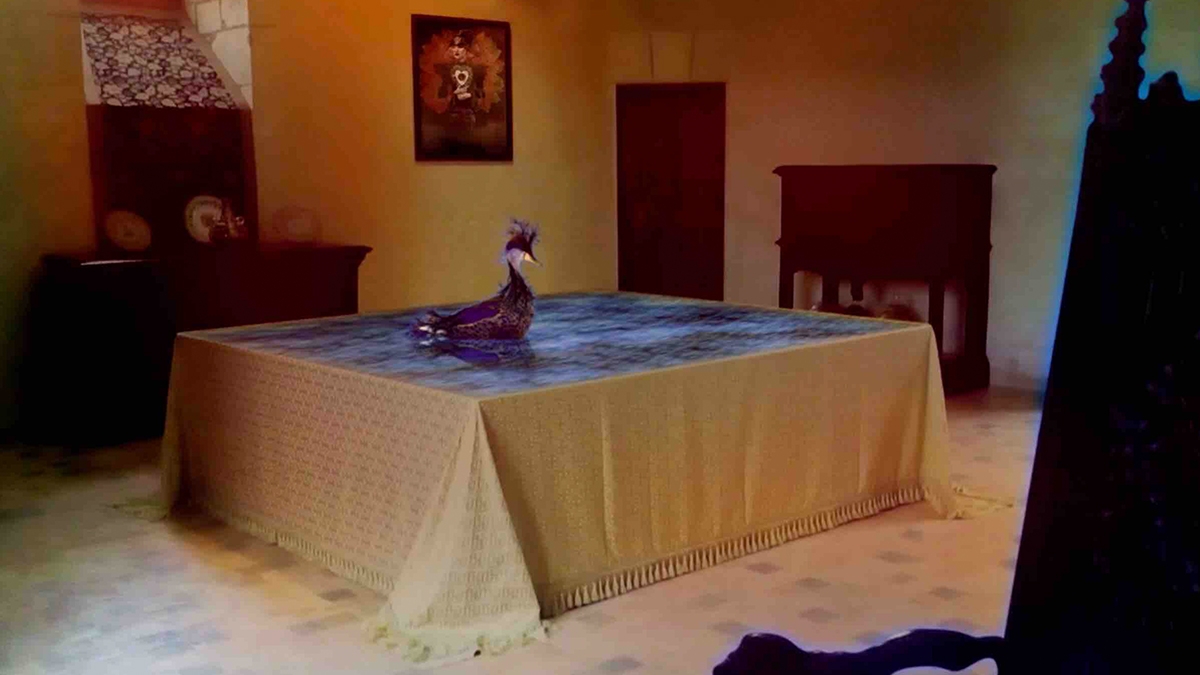
Éva Magyarósi, Garden of Auras (2015)
Éva Magyarósi’s work is a manifestation of poetic visualisation and visual poetry. Her works typically tell us about the mysteries of the female soul, about the body and feelings, displaying polyphonic stories of strange dreams and situations experienced in real life. The pieces often blend strategies of experiencing evanescence through images and narration, and of processing remembrance through making it collective. Her works of art can be interpreted as visual diaries, in which the fictive and the personal past are blended, thus contributing to the literary works of different philosophical theories on time and memory.
BIO
Éva Magyarósi (born in Budapest, 1981) lives and works in Budapest. She graduated at the Moholy-Nagy University of Art and Design as an animation artist in 2005. Éva is represented by Erika Deák Gallery, and has participated in various solo and group shows nationally and internationally, including: Love Stories, Video Forever, Isztambul, 2017; Ghosts, Château du Rivau, Patricia Laigneu Collection, Kochi – Muziris Biennale, Kerala, 2016; Un Instant Forever, Analix Forever, Genova, 2014; Planking and Dreaming, balzerARTprojects, Basel, 2013; Print Biennale, Kairo, Egyipt, 2003.
Éva is a very versatile artist, working in several genres: she writes short stories, creates public sculptures, animations, photos, and drawings, even though she is primarily known for her video art. Her work is a manifestation of poetic visualisation and visual poetry. Her works typically tell us about the mysteries of the female soul, about the body and feelings, displaying polyphonic stories of strange dreams and situations experienced in real life. The pieces often blend strategies of experiencing evanescence through images and narration, and of processing remembrance through making it collective. Her works of art can be interpreted as visual diaries, in which the fictive and the personal past are blended, thus contributing to the literary works of different philosophical theories on time and memory.
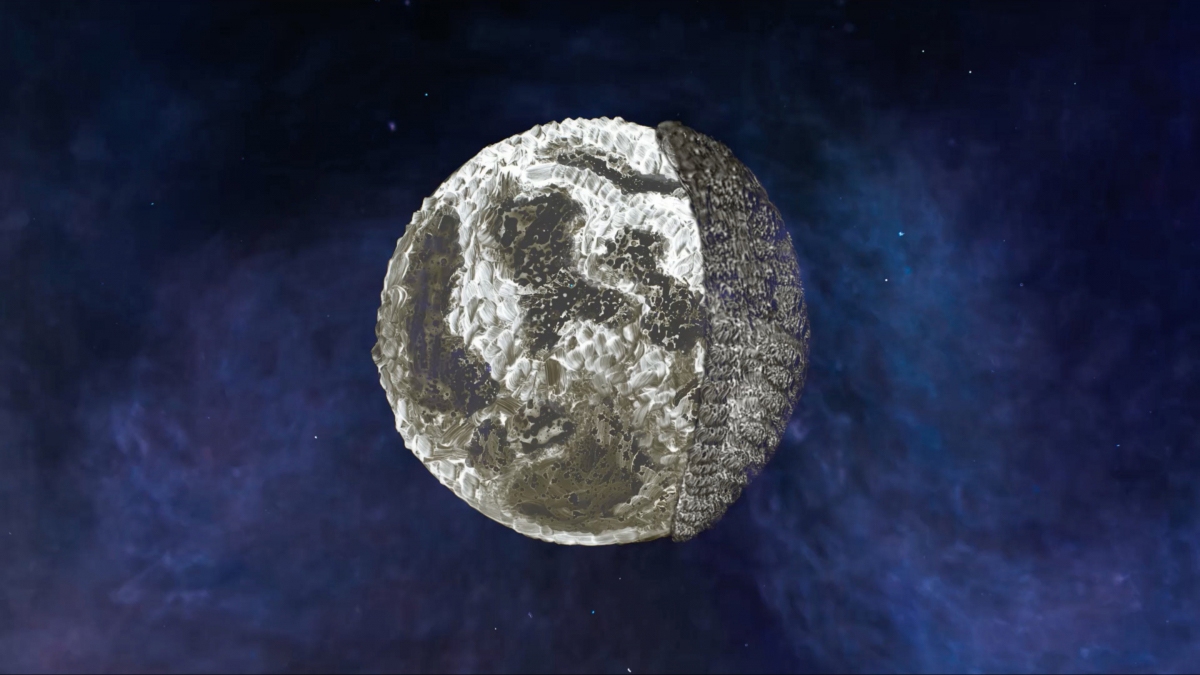
Marina Belikova, The Astronaut’s Journal (2016), Animation, 5 min 19 sec
In The Astronaut’s Journal, painted in the frame-by-frame oil on glass technique, the viewer is taken on a journey through memories, fears, hopes and other distant corners, found in one’s inner space. The immersive trip between planets is based on the author’s life story and was inspired by Stanislav Lemm’s Solaris: “Man has gone out to explore other worlds and other civilizations without having explored his own labyrinth of dark passages and secret chambers, and without finding what lies behind doorways that he himself has sealed.”
BIO
Marina Belikova is a Berlin based media artist, working with photography, graphic design and 2D animation. She has a background in web and media design. In 2012-2013 she did an M.A. in Communication Design in Kingston University London and in 2016 she graduated from Bauhaus University Weimar with an M.A. in Media Art and Design, making “The astronaut’s journal” as her master thesis. Belikova tells narratives through the old school oil on glass animation technique, where each frame is painted individually and then captured with a camera as stop motion animation. She also works with photography and mixed media, exploring the topics of human memories and interaction between people and urban spaces. Her animation have been screened at multiple film festivals in more than 10 countries and her photo series have received the Bauhaus Essentials Prize and have been shown various exhibitions.
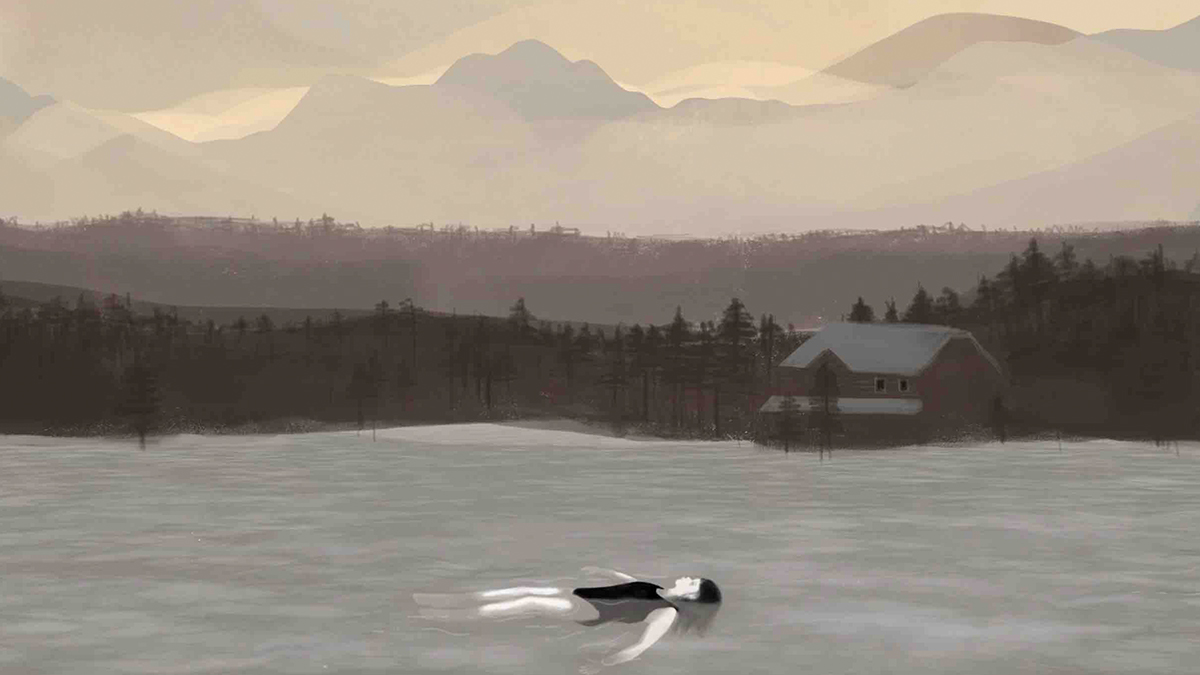
Bori Mákó, Silence (2018)
“My favoured subjects are natural images, landscapes and spaces that still preserve traces of human activities. In my work, I research transitory ethereal atmospheres, that are strongly influenced by the theme of solitude. My multidimensional site-specific video installations are designed to pull the audience into the imaginary world of the video itself. The process of inward attention is essential to me, and I feel that focusing on nature ist the best way to evoke this meditative state.” (Bori Mákó)
BIO
Bori Mákó graduated from the Moholy-Nagy University of Arts and Design in 2018 and holds a master’s degree in animation. Her visual language represents different genres of digital painting, and her exhibition portfolio includes large-scale prints, printed publications and video installations. In addition to her artistic work, she participates in animated movie projects. She is a founding member of Hen Studio, and she has been teaching Digital Paintings since 2019.
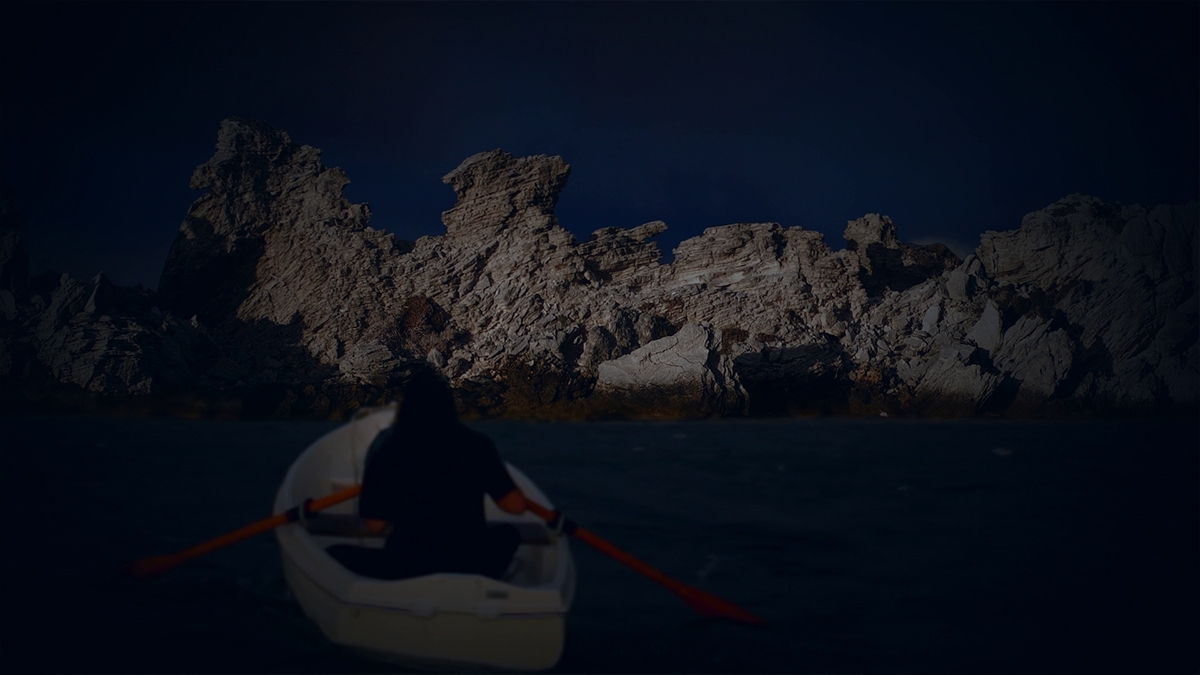
Kate McMillan, Paradise Falls I (2011) + Paradise Falls II (2012)
A topic made especially poignant in today’s pandemic reality, Kate McMillan’s Paradise Falls is a tribute to the disappeared, to the forgotten sites of distant traumas, to the frailty of personal and historic memory. Drawing parallels between physical and psychological landscapes, McMillan has created moving paintings where ghost-like people flicker in and out of existence, as symbols of fractured histories that disappear from focus, yet continue in our collective psyche as haunting traumas. Seen now, from the epicenter of our pandemic crisis, this begs the question of how will we look back upon, and remember, the time of Corona?
BIO
Kate McMillan (b.1974, Hampshire, UK), lived in Perth, Australia from 1982-2012, relocating to London in 2013. McMillan’s work incorporates a range of media including sculpture, film, sound, installation, textiles and performance. She is interested in the linking narratives of forgetting and place, often focusing on the residue of the past. McMillan’s artworks thus act as haunting memory-triggers for histories and ideas that are overlooked. McMillan has resided on the Board of the Perth Institute of Contemporary Arts (PICA) and the National Association for the Visual Arts (NAVA) based in Sydney. She earned her Phd at Curtin University, Perth. In addition to her practice as an artist, she is currently a Lecturer in Contemporary Art in the Department for Culture, Media and Creative Industries, King’s College, London.
McMillan’s work has been featured in various museums and biennales, including: the 17th Biennale of Sydney; the Trafo Centre for Contemporary Art, Poland; Minsheng Art Museum, Shanghai; Art Gallery of Western Australia; Gertrude Contemporary, Melbourne; Perth Institute for Contemporary Art; John Curtin Gallery, Perth; Govett Brewster Art Gallery, New Plymouth, New Zealand, and the Australian Centre for Photography, Sydney. Previous solo exhibitions include ‘The Past is Singing in our Teeth’ presented at MOMENTUM in 2017, which, in 2018, toured to the Civic Room in Glasgow and Arusha Gallery for the Edinburgh Arts Festival. Other solo exhibitions include ‘Instructions for Another Future’ 2018 Moore Contemporary, Australia; ‘Songs for Dancing, Songs for Dying’, 2016, Castor Projects, London; ‘The Potter’s Field’, 2014, ACME Project Space, London; ‘Anxious Objects’, Moana Project Space, Australia; ‘The Moment of Disappearance’, 2014, Performance Space, Sydney; ‘In the shadow of the past, this world knots tight’, 2013 Venn Gallery; Paradise Falls, 2012, Venn Gallery; ‘Lost’ at the John Curtin Gallery in 2008, ‘Broken Ground’ in 2006 at Margaret Moore Contemporary Art and ‘Disaster Narratives’ at the Perth Institute of Contemporary Arts for the 2004 Perth International Arts Festival.
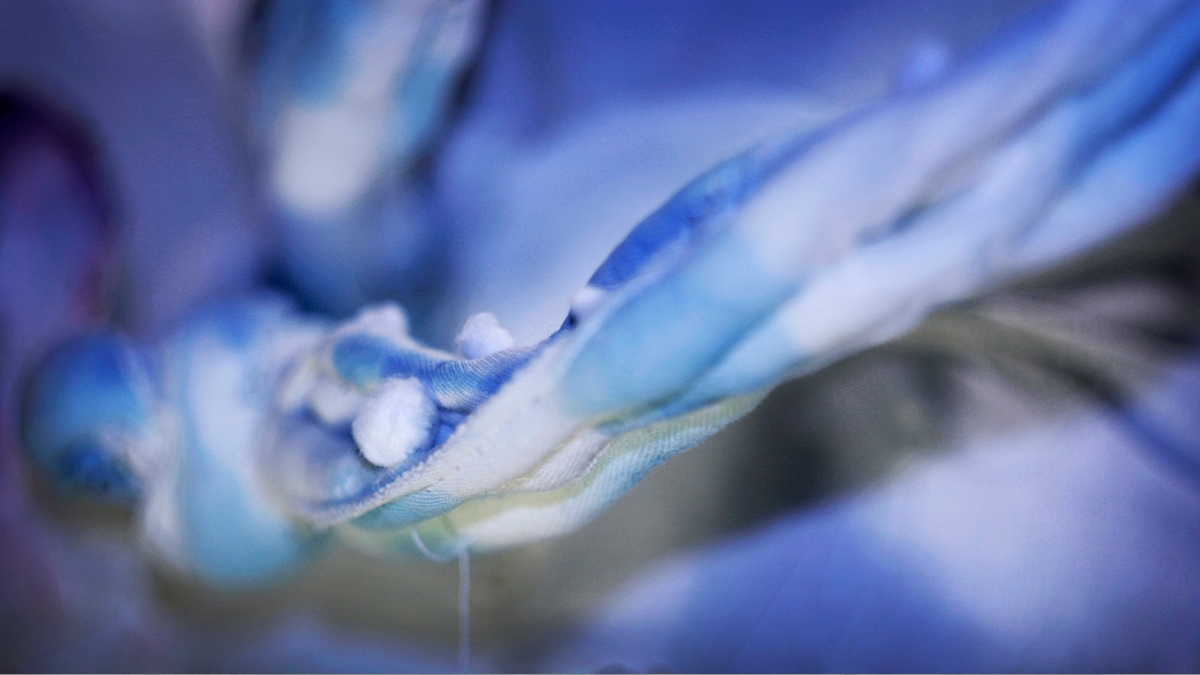
Bea Pántya, Transit (2012)
“If you stay still for a long time, nature will draw you in and absorb you. You can listen to its rhythm, its depth, and explore previously hidden details. Sometimes it moves fast, sometimes it makes only one minuscule movement a day.
My textile sculptures are based on existing and non-existing, living, and decaying forms in nature, abstract shapes and patterns, which are created by time, gravity and different organisms. If you watch them closely, you can see and understand the connection between the textures, colours, dimensions, scents and dynamics. I create gardens, a living and moving world, which can feel different from our universe, yet built from the elements of our reality. Transit is an experimental object animation about the dynamics of devastation and the micro worlds, spaces, and new life forms – the fantasy worlds beyond the humanly observable spheres.” (Bea Pántya)
BIO
Bea Pántya graduated at the Moholy-Nagy University of Art and Design in 2021 as an animation artist. She works with textile sculptures and has participated in several exhibitions in Hungary. Her most recent short films, Transit and Horizon Leap have been presented at a number of international film festivals, such as: the Hungarian Independent Film Festival, 2009 and 2010 (1st prize); IX Videominute, Zaragoza, Spain, 2009 (3rd prize); Naoussa International Film Festival, Greece, 2010; Mediawave Film Festival, Hungary, 2013; International Short Film Festival, Lille, France, 2013; Hiroshima International Animation Festival, Japan, 2013; Montreal Stop-motion Festival, Canada, 2014.
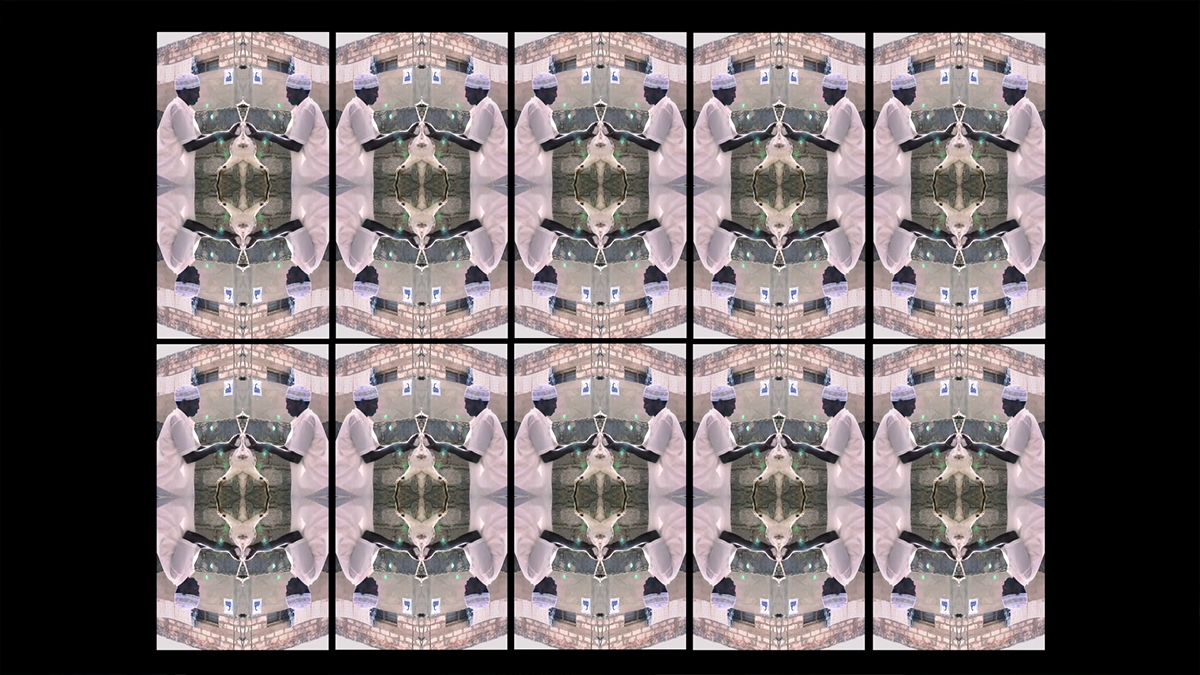
Theo Eshetu, Festival of Sacrifice (2012)
Faith and spirituality is the subject of Theo Eshetu’s Festival of Sacrifice, depicting an ancient cultural tradition, the celebration of Eid-ul-Adha, the Islamic Festival of Sacrifice. Turning the ritual itself into a trance, the video recreates, through its multiplication of images, the kaleidoscopic patterns that highlight the transcendental aspect of the event. In creating aesthetic beauty from images of ritual slaughter, Eshetu shows us how spirituality can locate beauty, hope and a deeper meaning even in times of death and disease.
BIO
Theo Eshetu was born in London 1958, and grew up in Addis Ababa, Dakar, Belgrade and Rome. He now lives and works in Berlin. A pioneer of video art since 1982, Theo Eshetu draws from anthropology, art history, scientific research, and religion—Catholic, African, Muslim, Buddhist—to explore clashes and harmonies of human subjectivity between world cultures in the global context. Though essentially conceptual, and often exploring video’s formal components of time and light, Eshetu’s work is often focused on cultural displacement, and is always grounded in compelling aesthetic components, often achieved through fractal repetition, such as kaleidoscopic mirroring, multi-screen projections, or mosaic-like patterning of images.
Among numerous international awards, Eshetu was Artist in Residence at Tarabya Cultural Academy, Turkey where he completed aspects of production for Altas Fractured (2017) which was featured in Documenta 14, Athens and Kassel in 2017. In 2012 he was Artist in Residence at the DAAD program in Berlin, where he exhibited The Return of the Axum Obelisk at DAADgalerie in 2014. In 2011 he participated the Venice Biennale and the Sharjah Biennale. His work has appeared at: The New Museum, NY; the New York African Film Festival; DIA Foundation’s Electronic Arts Intermix, NY; Snap Judgments at ICP (International Centre for Photography), NY; BAM Cinemateque, NY; Brooklyn Museum of Art, NY; Baltimore Museum of Art, Maryland USA; Smithsonian National Museum of African Art, Washington DC; the Institute of Contemporary Arts, London; Africa Remix at The Hayward Gallery, London; the Venice Film Festival; Roma Film Festival; Museum of Modern Art in Rome; Museum of Modern and Contemporary Art, Nice, France; the UNESCO headquarters in Paris; the Martin Gropius Bau, Berlin; among many other museums, biennales, and film festivals.
WEEK 3 / 6 / 7
30 April – 2 May, 21 – 23 + 28 – 30 May
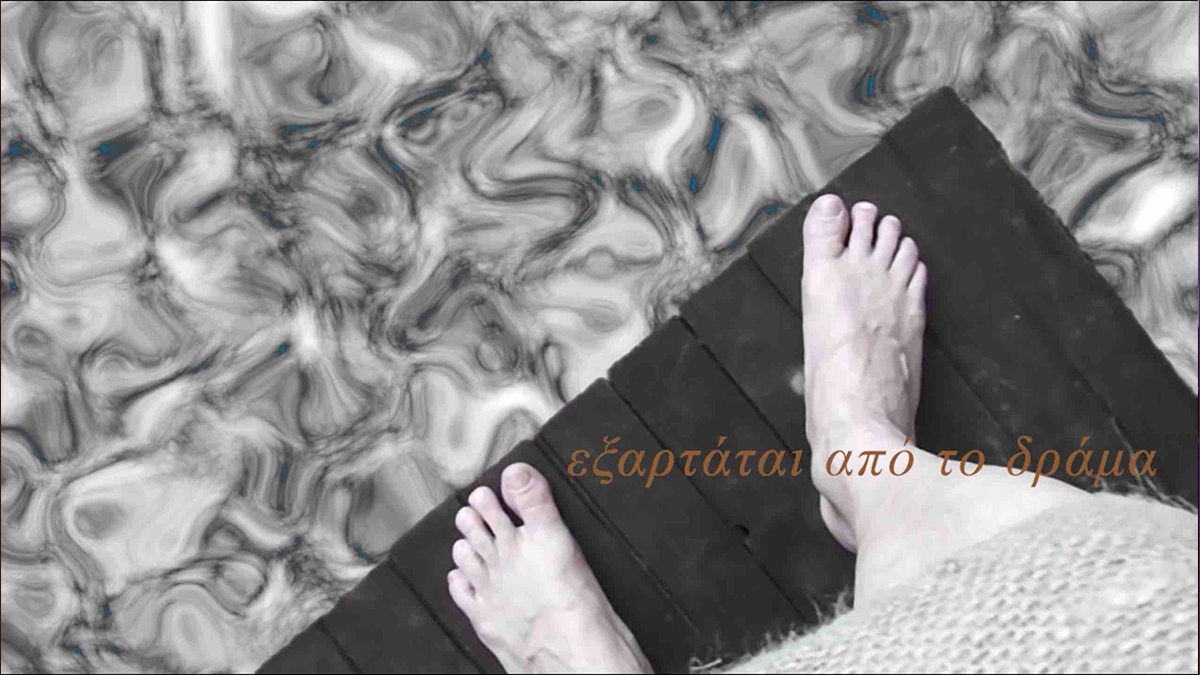
Tamás Komoróczky, Nondirectionality (2019)
The vertigo-inducing composition of Tamás Komoróczky’s video Nondirectionality (outlook from the tower) evokes the imagery of ancient Christian hermits living in secluded towers. Looking down from the protagonist’s point of view towards the swirling chaos of the world beneath, the feeling of isolation, loneliness and quiet tranquility become palpable. As we are about to enter the second year of the global pandemic, most of us are painfully familiar with the sense of total isolation and the role of the quiet observer.
BIO
Tamás Komoróczky was born in 1963 in Budapest, currently lives and works in Budapest and Berlin. He graduated as painter in 1990, and two years later finished his postgraduate studies in the mural department at the Hungarian University of Fine Arts, Budapest. He also studied in the Video Department of the Staatliche Kunstakademie Düsseldorf, Germany in 1991. Tamás was awarded several scholarships and artist residencies, among others at the Hungarian Academy in Rome, at Künstlerhaus Bethanien, Berlin as well as at the European Center for Contemporary Art Actions in Strasbourg. His works have been presented nationally and internationally at a great number of solo and group shows, eg. The Dead Web – The end, Ludwig Múzeum, Budapest, 2020; Public Private Affairs, Ferenczy Múzeumi Centrum – Művészet Malom, Szentendre, 2019; Abstract Hungary, Künstlerhaus, Halle für Kunst & Medien, Graz, 2017; Opus Aquanett, Wissenschaftshafen, Magdeburg, 2017; Video Art Projections on the Manhattan Bridge, New York, 2016; Kritik und Krise #3:Ornament der Brüderlichkeit, Collegium Hungaricum Berlin, Berlin, 2014; PANDAMONIUM PREVIEW / INTERPIXEL, Collegium Hungaricum Berlin, 2014; The Hero, the Heroine and the Author, Ludwig Museum, Budapest, 2012; Action!, INFERNOESQUE, Berlin, 2010; Screening Room: Contemporary Hungarian Video Artists, Janos Gat Gallery, New York, 2009; Art Forum Berlin (Lada projekt), Berlin, 2008; Focus Istanbul, Martin-Gropius-Bau, Berlin, 2005; Loud and Clear Too, Chinese European Art Center, Xiamen University Art College Künstlerhaus Bethanien, Berlin, 2005; 1. Muestra del Internatcionale Video, El Salvador, San Salvador, 2003; Try again later, Gaswork Gallery, London, 1998; Beyond Belief, Museum of Contemporary Art, Chicago, 1995.
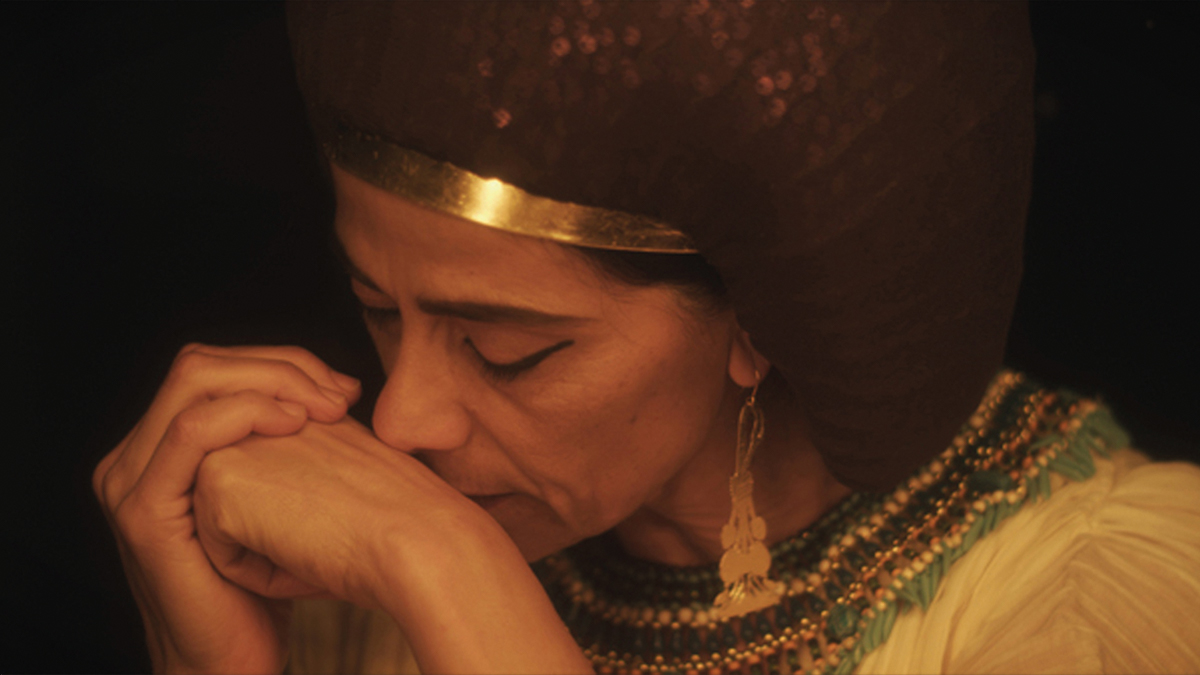
David Krippendorff, Nothing Escapes My Eyes (2015)
David Krippendorff’s Nothing Escapes My Eyes is a time-warping tribute to a changing world where, to a moving soundtrack from the eponymous opera, a would-be Aida sheds tears for a place and time which no longer exist. COVID-19 changed our world forever, leaving gaping holes in the hearts of those who lost loved ones, impoverishing those prevented from working. Yet it also generated a remarkable outpouring of creativity, good will, and good humor as people around the world try to cope, individually and communally, with our changing world in the time of Corona.
BIO
David Krippendorff, born in Berlin in 1967, is a US/German interdisciplinary artist and experimental filmmaker. Currently based in Berlin, he grew up in Rome, Italy, and studied art at the University of Fine Arts in Berlin, Germany, where he graduated with a masters degree in 1997. His works, films and videos have been shown internationally, including: the New Museum (New York), ICA (London), Hamburger Kunsthalle (Hamburg), Museum on the Seam (Jerusalem). He has participated in four Biennials (Prague, Poznan, Tel Aviv, and Belgrade), as well as in many international art and film festivals worldwide.
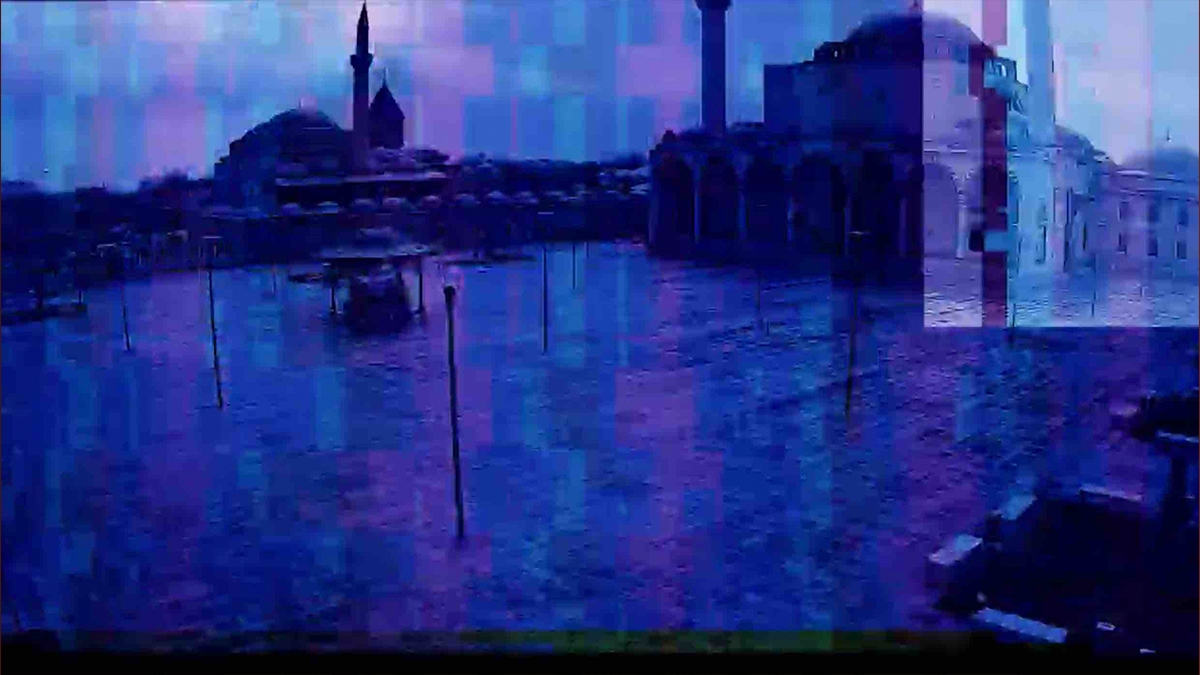
Kristóf Szabó, WRONG DATA / empty space (2020)
“In February 2020, I visited the ARCO Madrid fair, and almost immediately after my return to Budapest, Covid-19 reached Europe. My friend from Madrid sent photos of the empty city, which I developed further, and created the first piece of the series. I decided to send out a request to artists around the world to collaborate in a photographic series. Luckily, I received a great number of photos from artists, who helped me to expand the project. We created a global artwork that symbolises the collaboration of artists and, at the same time, draws attention to the defects of the functioning of our society, which we must re-evaluate to avoid further catastrophes.
Due to Covid, a certain error, or glitch occurred in our lives. Previously busy urban spaces have been abandoned, the world has stopped, people are forced to stay at home. The problem was caused by human activity in the first place: by our way of life, excessive travelling, globalisation and international trading. Now that globalisation is at a standstill, CO2 emissions have dropped drastically, and our biological footprint has been considerably lowered in a relatively short time. The newly empty spaces are the true witnesses of our overworked, wasteful lives, and also the proof that we need to change our ways urgently, in order to avoid future tragedies.” (Kristóf Szabó)
Contributors: Kiszner Édua, Antal István, Marcin Idźkowski, Angela Galvan, Gasquk, Kristijonas Dirse, Peter Korcek, Erhan US, Ciro Di Fiore, Elena Kilina, Sangeeth Aiyappa, Vladimir Stepanchenko, Raki Nikahetiya, David Leshem, Haccoun Myriam
BIO
Kristóf Szabó was born in 1988 in Győr (Hungary). He graduated as a graphic artist (2012) and art teacher (2013) at the Hungarian University of Fine Arts in Budapest. In 2011, he studied at the Dresden Academy of Fine Arts. Kristóf has been using the brand name KristofLab since 2016, in order to highlight the interdisciplinary and collaborative nature of his creative process, as well as his media art practice. He is a member of the Ziggurat Project, a Hungarian interdisciplinary ensemble creating artistic performances bridging over various genres of creative output. Kristóf has been working with the group on site-specific experimental projects around Europe since 2015.
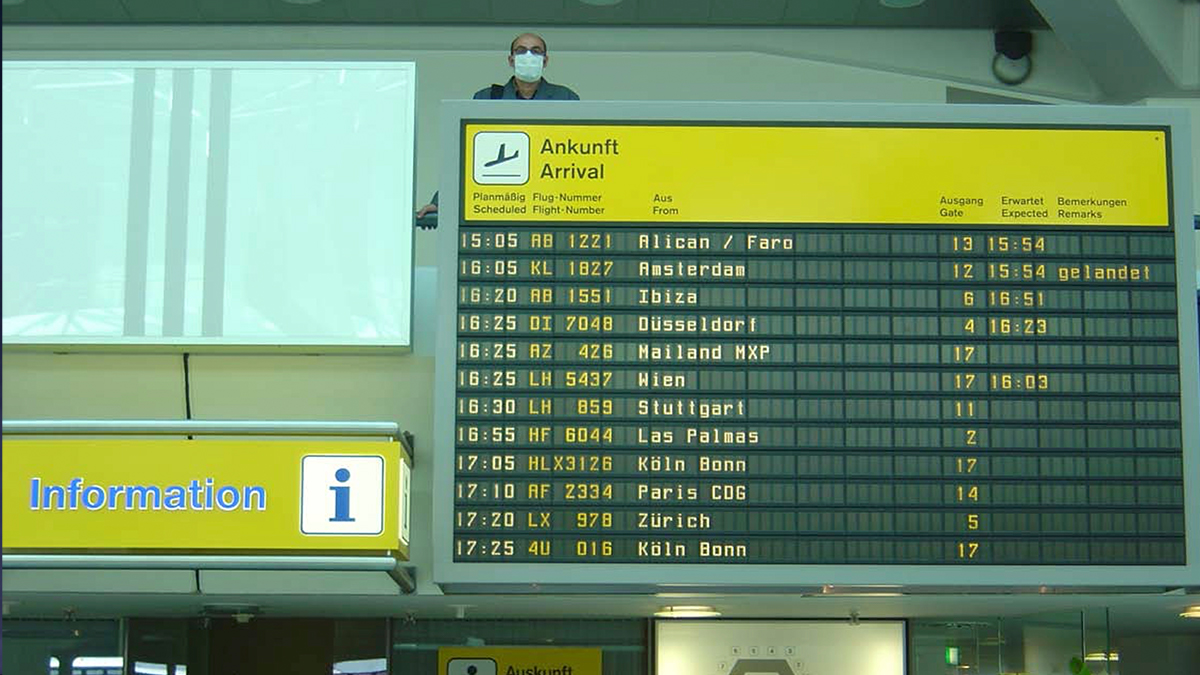
Map Office, Viral Operation (2003)
In Viral Operation the Hong Kong artist duo Map Office fly to Berlin from a Hong Kong ravaged by the SARS epidemic, this century’s first major viral outbreak in 2003, for a road trip crossing all possible European land borders on their way to the Venice Biennale. Wearing masks, they are treated as suspect Others, potential contaminants. Now, 18 years later, when we are all wearing masks and travel restrictions abound, we look back at Viral Operation as a social experiment, prefiguring what was to come.
BIO
MAP OFFICE is a multidisciplinary platform devised by Laurent Gutierrez (b. Casablanca, 1966) and Valérie Portefaix (b. Saint-Etienne, 1969). This duo of artists/architects has been based in Hong Kong since 1996, working on physical and imaginary territories using varied means of expression that includes drawing, photographs, video, installations, performance and literary and theoretical texts. Their entire project forms a critique of spatio-temporal anomalies and documents how human beings subvert and appropriate space. Their projects have been included in major international art and architecture events, including: the 7th, 11th and 12th Venice Architecture Biennale (2000, 2008, 2010), the 7th Gwangju Biennale (2008), the 10th Istanbul Biennale (2007), the 15th Sydney Biennale (2006), and the 52nd Venice Art Biennale (2007).
Laurent Gutierrez is an Associate Professor at the School of Design, The Hong Kong Polytechnic University, where he leads the Environment and Interior Design discipline and the Master of Strategic Design as well as the Master in Urban Environments Design. He is also the co-director of SD SPACE LAB. Gutierrez is currently finishing a PhD on the “Processes of Modernization and Urbanization in China focusing on the Pearl River Delta region.”
Valérie Portefaix is the principal of MAP OFFICE. She received her Master of Architecture degree from the School of Architecture Paris-Belleville and a PhD in Urbanism from the Pierre Mendes University France. She is currently a Visiting Assistant Professor at the School of Design, The Hong Kong Polytechnic University.
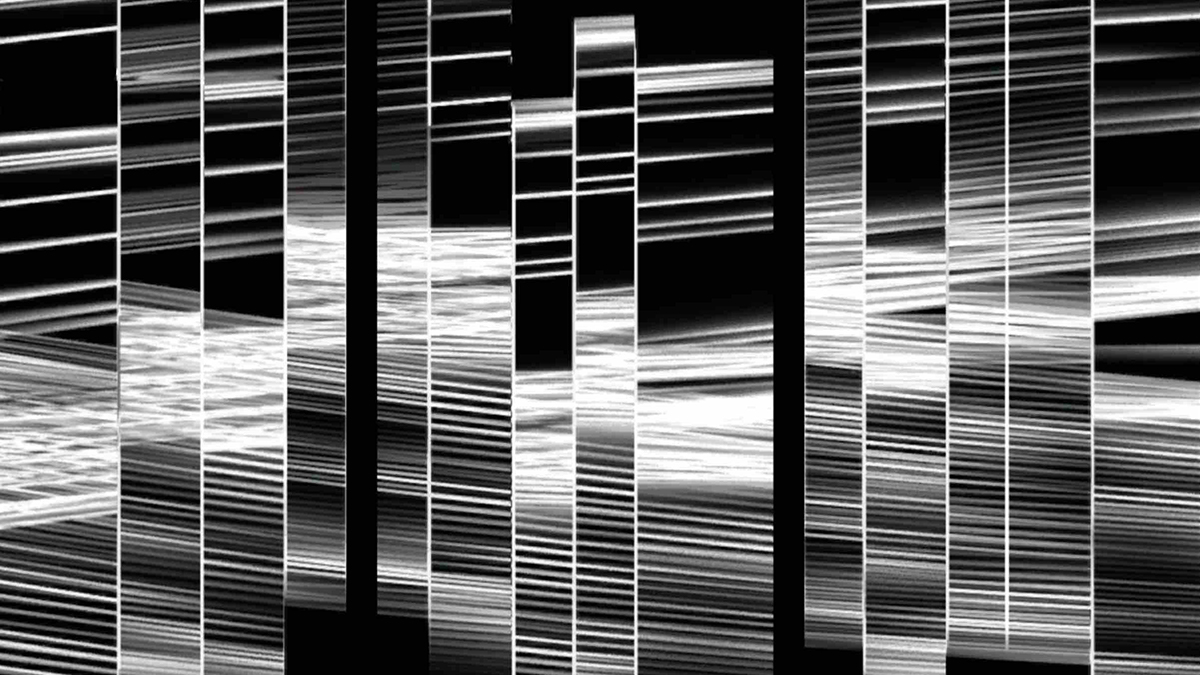
Gáspár Battha & András László Nagy, Parallel Waves (2018)
Inspired by the idea of “levitation”, Parallel Waves makes reference to the tensions induced by this phenomenon and its various forms found in nature: sound and light waves, smoke, wind and gravity or the murmuration of flocking birds. Parallel Waves takes the viewer to another dimension full of wonder, yet fully rooted in scientific facts.
Concept & Animation: Gaspar Battha (gasparbattha.com) & Andras Nagy (andrasnagy.xyz/) | Sound: Adrian Newgent (adriannewgent.nl/)
BIO
Born in Budapest (born in 1988, Hungary), Gáspár Battha spent a considerable part of his childhood in Bergen, Norway. He received his master’s degree in art and media at the University of Arts in Berlin (UdK). He has been working as a freelance art director, motion designer and media artist. Gásoár has produced a great number of independent art projects and has developed multimedia projects for museums, exhibitions and product launch events around the world. He has been guest lecturer at the University of Arts in Berlin since 2014.
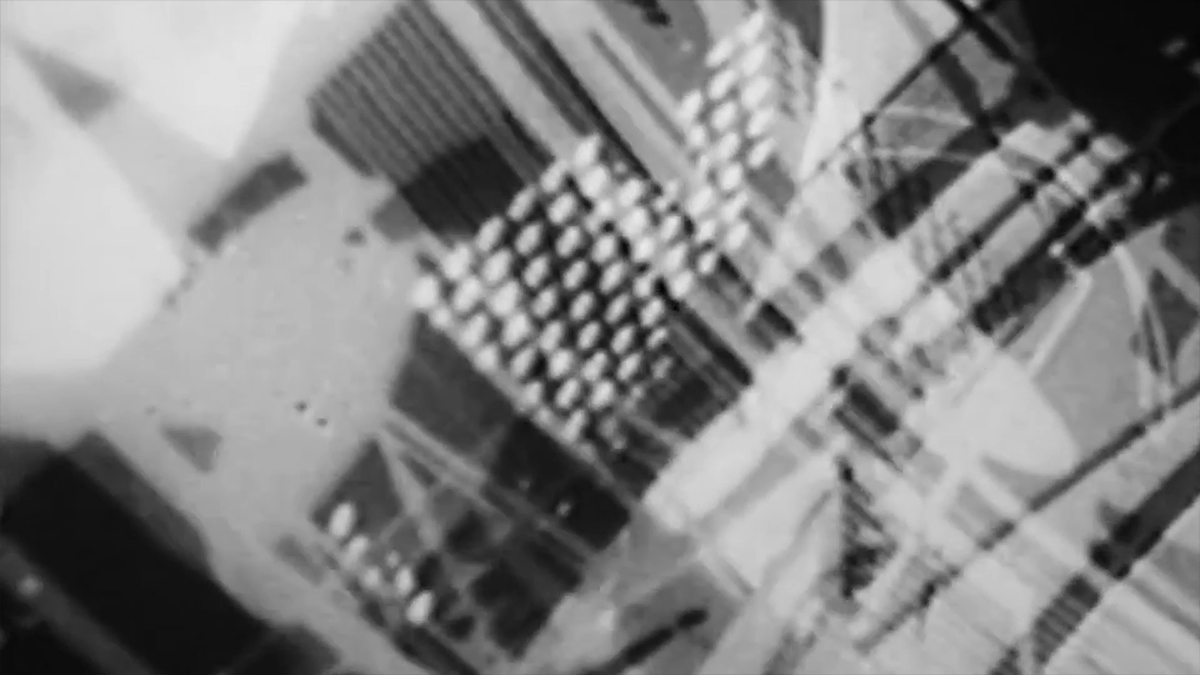
David Szauder, Light Space Materia(2020)
Szauder’s film Light Space Materia commingles found footage related to the seminal ideas of the Bauhaus with digital 3D animations and a soundtrack made by the artist to foreground the haptic qualities of the materiality of image and sound. Szauder focuses on the fundamental question of how modern technology could change the formal expression of movement. Just as the Bauhaus always held an important pioneering position in the relationship of art to technology, this synergy becomes increasingly important as new technologies of making and viewing images continue to evolve in our over-mediated pandemic age where we engage with the world predominantly through our screens.
BIO
Media artist David Szauder (b. 1976 in Hungary) studied Art History at the Eötvös Loránd University and Intermedia at the Hungarian University of Fine Arts in Budapest, and completed a Masters Fellowship at the School of Arts, Design and Architecture at the Aalto University in Helsinki. From 2009 to 2014 he worked as the curator at the Hungarian Cultural Institute in Berlin (CHB). David Szauder is a visiting lecturer at the Film Academy, Potsdam, in addition to leading workshops on interactive media in Berlin and Budapest since 2010. Since 2019, he is the New Media Advisor for the Artistic Director of the VEB 2023 European Capital of Culture. David Szauder has participated in a variety of international projects as artist and curator. In cooperation with MOMENTUM, previous projects include: “Art Nomads: Made in the Emirates” at Studio 1, Kunstquartier Bethanien (Berlin, 2016);“Ganz Grosses Kino” KIK Eight at Kino International (Berlin, 2016); MOMENTUM InsideOut: Amir Fattal, “Atara” (Berlin Gallery Weekend, 2015); MOMENTUM InsideOut: “A Time for Dreams” & “Budapest Sketch”(Berlin Art Week, 2014); “PANDAMONIUM Preview // INTERPIXEL: Media Art from Shanghai and Budapest” (Berlin Gallery Weekend, 2014);
ABOUT .CHB
Collegium Hungaricum Berlin (CHB) was established in 1924 with the aim of facilitating scientific exchange between Hungary and Germany. Today, CHB is active in the fields of both science and culture. Collaboration with Hungarian, German and international organisations plays an essential role in the professional programme of CHB. Between 1973 and 1990, the predecessor of CHB, the old “House of Hungarian Culture” in Karl-Liebknecht Straße, was an integral part of the intellectual community of East Berlin. In 2007, CHB moved to its new, cutting-edge building next to the Museum Island and Humboldt University. Collegium Hungaricum Berlin is part of the worldwide network of Hungarian Cultural Institutes, and a founding member of EUNIC Berlin, the association of European Cultural Institutes.
IN PARTNERSHIP WITH
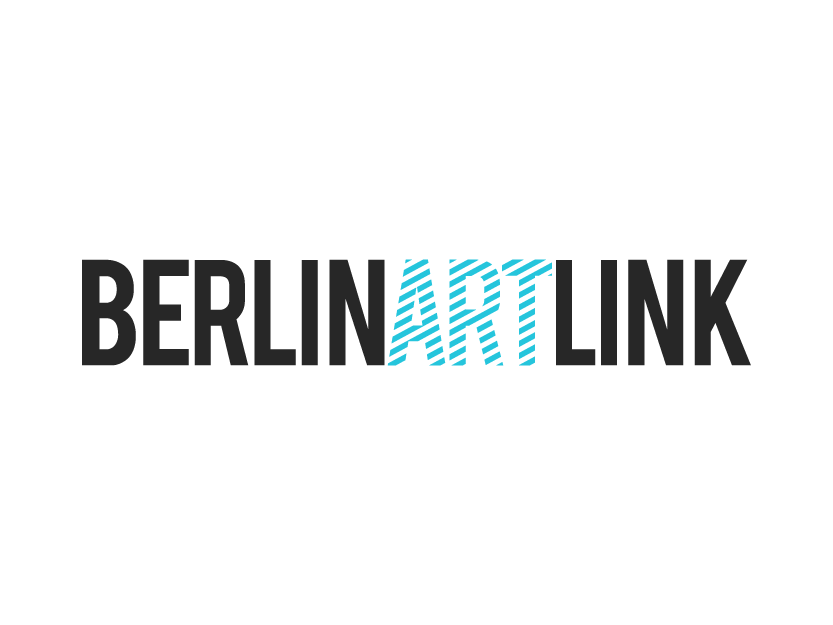 |
 |


 Back to Homepage
Back to Homepage